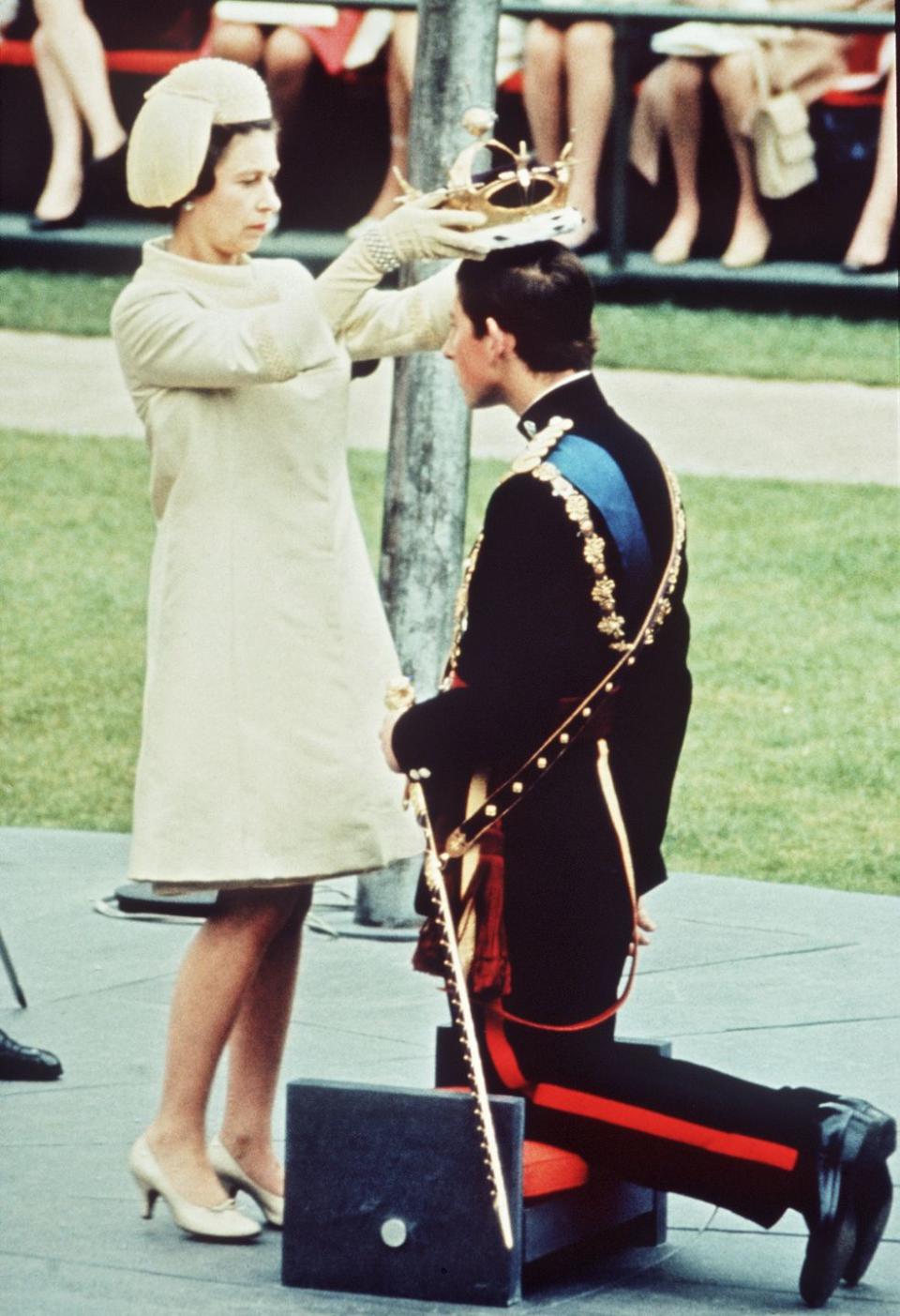The Meaning Behind Prince Charles's Royal Title, the Prince of Wales

Most may know Prince William and Prince Harry's father as Prince Charles, but he goes by a handful of regal monikers, including his most commonly used title: the Prince of Wales. If you need to catch up on your royal history before bingeing the new season of The Crown, read up on the historical meaning behind the prince's famous title below.
What It Means
The Prince of Wales is a title given to the oldest male heir of the sovereign, according to the royal's official website. (Prince Charles is the oldest child and oldest son of Queen Elizabeth II and her husband, Prince Philip.) And yes, it literally refers to the country of Wales, which is part of the United Kingdom.
When Prince Charles Received the Title
The title of Prince of Wales isn't inherited but bestowed by the sovereign. Prince Charles was invested by his mother, the queen, as the Prince of Wales on July 1, 1969 with a heraldic ceremony at Caernarfon Castle, an iconic Welsh landmark. He was 20 years old at the time. Before the service, young Charles studied at the University College of Wales at Aberystwyth for a term to learn to speak Welsh, according to his website.
Charles won't be Prince of Wales forever; he's expected to give the title to his oldest male heir, Prince William, when he accedes the throne and becomes king.
In early 2019, the royal family celebrated the 50th anniversary of Charles's investiture.

His Royal Duties
According to his official website:
"The main part of The Prince of Wales's role as Heir to The Throne is to support Her Majesty The Queen as the focal point for national pride, unity and allegiance and bringing people together across all sections of society, representing stability and continuity, highlighting achievement, and emphasizing the importance of service and the voluntary sector by encouragement and example."
That means the prince will represent the sovereign while welcoming foreign dignitaries or while traveling overseas. His role also includes supporting the armed services (such as performing ceremonial duties, supporting military personnel and veterans, and holding military appointments), performing tours abroad as an ambassador of the crown, undertaking engagements for various organizations in the U.K., and conducting investitures at Buckingham Palace on the queen's behalf.

Other Past Princes of Wales
The last native Prince of Wales was Llywelyn ap Gruffydd, also known as Llywelyn the Last, who gave himself the title in 1258 as he fought to regain lands taken by England. He died in 1282.
Prince Charles's website adds:
"The title was recreated in 1301 for Edward of Caernarfon, the future Edward II. It was the first time the eldest son of the King of England was invested as Prince of Wales, making Edward II the first of the current line of Princes of Wales, of which His Royal Highness is the 21st."
Before Prince Charles, the last Prince of Wales was Prince Edward, son of King George V and Queen Mary, who was invested in 1911. In 1936, he acceded the throne and became King Edward VIII.

Charles's Other Titles
In addition to Prince of Wales, Prince Charles holds a number of titles like Duke of Cornwall and Duke of Rothesay, which he uses in Scotland. All together, his full list of titles is quite a mouthful.
His Royal Highness Prince Charles Philip Arthur George, Prince of Wales, KG, KT, GCB, OM, AK, QSO, CC, PC, ADC, Earl of Chester, Duke of Cornwall, Duke of Rothesay, Earl of Carrick, Baron of Renfrew, Lord of the Isles and Prince and Great Steward of Scotland.
The letters refer to orders of chivalry.
KG: Knight of the Garter
KT: Knight of the Thistle
GCB: Knight Grand Cross of the Order of the Bath
OM: Order of Merit
AK: Knight of the Order of Australia
QSO: Companion of the Queen's Service Order
CC: Order of Canada
PC: Privy Counsellor
ADC: Aide-de-Camp
Try saying that ten times fast.
You Might Also Like